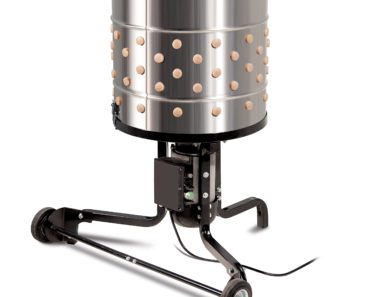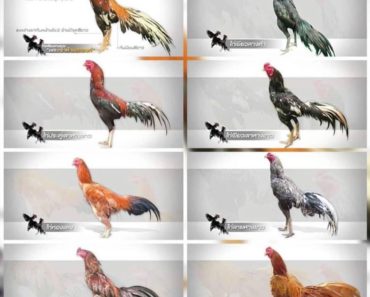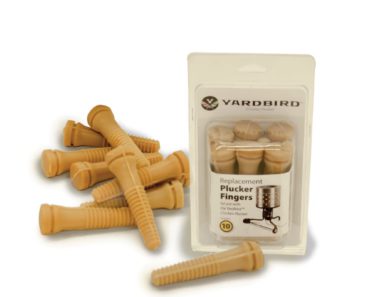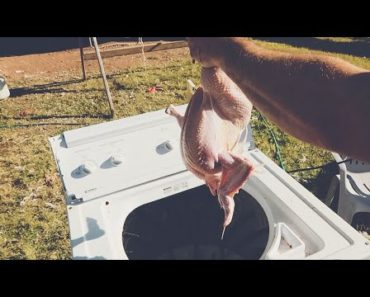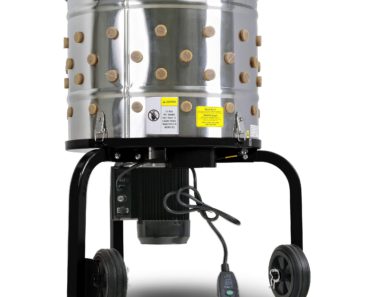Contents

Welcome to my blog, ! Today, we will dive into the wonderful world of hatching time for chicken pluckers. Discover the fascinating process of incubating and hatching chicks, and learn valuable tips and tricks to ensure a successful outcome. Get ready to embrace the journey from egg to fluffy feathered friend!
Unlocking the Secrets of Hatching Time in Chicken Plucker: A Complete Guide
Hatching time is a crucial step in the process of raising chickens in Chicken Plucker. Understanding the factors that affect hatching time and how to optimize it can greatly improve your overall production.
Temperature control is one of the most important aspects of hatching time. Maintaining a consistent temperature within the incubator is essential for successful hatching. It is recommended to keep the temperature between 99.5°F (37.5°C) to 100°F (37.8°C) throughout the incubation period.
Humidity levels also play a significant role in hatching time. Proper humidity helps to prevent the eggs from drying out and aids in the development of the embryo. In general, it is advised to maintain humidity levels at around 50-55% during the incubation period. However, it’s important to adjust the humidity according to the specific needs of the chicken breed you are hatching.
Another factor to consider is egg turning. Regularly rotating the eggs during the incubation period helps to distribute heat evenly and prevents the embryo from sticking to the shell. It is recommended to turn the eggs at least three times a day until the last three days before hatching when they should be left undisturbed.
The quality of the eggs also has a direct impact on hatching time. It’s crucial to use fresh and clean eggs for optimal results. Additionally, make sure to avoid eggs with cracks or deformities as they are less likely to hatch successfully.
Lastly, patience is key when it comes to hatching time. The incubation period can vary depending on the chicken breed, ranging from 21 to 28 days. It’s important to resist the temptation of interfering with the process and allow nature to take its course.
Understanding the importance of temperature control, humidity levels, egg turning, egg quality, and patience is essential in unlocking the secrets of hatching time in Chicken Plucker. By following these guidelines, you can maximize your chances of successful hatching and ensure the healthy growth of your chicken flock.
Understanding the Hatching Time for Chicken Plucker
The hatching time for chicken plucker refers to the duration it takes for fertilized eggs to hatch into chicks using a chicken plucking machine. This process is crucial in the poultry industry as it determines the efficiency and productivity of the chicken plucking operation.
Key points:
– The hatching time can vary depending on various factors such as the breed of chickens, incubation temperature, humidity levels, and egg quality.
– It is essential to maintain optimal conditions during the incubation period to ensure healthy chick development.
– Regular monitoring and adjustment of incubation parameters are necessary to avoid any complications or delays in hatching time.
Factors Affecting Hatching Time
Several factors can influence the hatching time of chicken plucker, impacting the overall success of the process.
Key points:
– Incubation temperature: The temperature inside the incubator plays a vital role in determining the hatching time. Most chicken eggs require a constant temperature of around 99.5°F (37.5°C) for successful development.
– Humidity levels: Adequate humidity levels must be maintained throughout the incubation period to prevent the eggs from drying out. Humidity levels typically range between 50-60% but may vary depending on the specific breed.
– Egg quality: The fertility and quality of the eggs used for incubation can affect the hatching time. Fresh, clean, and properly stored eggs have a higher chance of successful hatching.
– Genetic factors: Different chicken breeds have varying hatching times. Some breeds may take slightly longer to hatch compared to others.
Tips for Ensuring Successful Hatching Time
To ensure a successful hatching time for chicken plucker, it is important to follow certain guidelines and best practices.
Key points:
– Maintain consistent temperature and humidity levels throughout the incubation period.
– Regularly turn the eggs to ensure proper chick development and prevent sticking to the shell.
– Avoid opening the incubator unnecessarily, as it can disrupt temperature and humidity levels.
– Monitor the development of the chicks using candling techniques to identify any issues or abnormalities.
– Provide appropriate nutrition and care for the newly hatched chicks to promote their overall health and growth.
By understanding the hatching time process, considering the factors affecting it, and following best practices, chicken plucker operators can optimize their operations and ensure successful hatching.
FAQ
What is the average hatching time for chicken plucker eggs?
The average hatching time for chicken plucker eggs is approximately 21 days. During this period, the eggs are incubated under controlled conditions to ensure optimal development. It is important to maintain consistent temperature and humidity levels throughout the incubation process to increase the chances of successful hatching. Regular monitoring and turning of eggs are also necessary to promote proper embryo development. After the incubation period, the chicks start breaking through the eggshell and emerge as newly hatched chicks.
Are there any factors that can affect the hatching time of chicken plucker eggs?
Yes, there are several factors that can affect the hatching time of chicken plucker eggs.
1. Incubation Temperature: The temperature at which the eggs are incubated plays a crucial role in determining the hatching time. The ideal incubation temperature for chicken plucker eggs is around 99.5°F (37.5°C). Deviations from this temperature can either delay or accelerate the hatching process.
2. Humidity: Proper humidity levels are essential for the development of the embryos inside the eggs. High humidity can lead to delayed hatching, while low humidity can cause the eggs to dry out and result in early hatching. Maintaining a consistent humidity level throughout the incubation period is crucial.
3. Egg Turning: Regular egg turning is important to prevent the embryos from sticking to the shell membrane and promote proper development. If the eggs are not turned regularly, it can result in extended hatching times or even failure to hatch.
4. Egg Quality: The quality of the eggs used for incubation can also affect the hatching time. Fertile eggs with good shell quality, proper storage conditions, and optimal nutrition will have a higher chance of hatching on time.
5. Breeding Stock and Genetics: The breeding stock’s genetics can influence the hatching time. Some breeds may have shorter or longer incubation periods compared to others. It’s important to consider the specific breed’s typical hatching time when incubating chicken plucker eggs.
6. Egg Health: Eggs with poor health, such as those infected with bacteria or viruses, may have difficulties in reaching full-term incubation. This can result in delayed or failed hatching.
It’s worth noting that individual variations within a batch of eggs can also affect hatching time, as each egg may develop at its own pace.
Is there a specific temperature or humidity level that is ideal for maximizing hatching time in chicken pluckers?
There is no specific temperature or humidity level that is universally ideal for maximizing hatching time in chicken pluckers as it may vary depending on the specific equipment and eggs being incubated. However, maintaining a consistent temperature between 99.5°F (37.5°C) to 100°F (37.8°C) and humidity levels between 50% to 55% throughout the incubation period is generally recommended.
It is important to note that different stages of incubation require slightly different temperature and humidity conditions. During the first 18 days of incubation, maintaining a steady temperature and humidity is crucial for proper embryo development. In the final days before hatching, decreasing humidity to around 65% can help prevent excess moisture inside the egg and aid in the hatching process.
Regular monitoring of temperature and humidity levels using a reliable thermometer and hygrometer is essential for successful incubation. Adjustments may be needed based on the specific conditions within the incubator and the feedback from the developing embryos. It is always advisable to follow the manufacturer’s guidelines for the particular chicken plucker and refer to reliable sources or consult with experienced breeders for further information.
Hatching time plays a crucial role in the efficiency and effectiveness of a chicken plucker. It is essential to consider the optimal hatching time to ensure easy and efficient feather removal, minimizing the risk of damage to the bird’s skin. Timing is everything when it comes to achieving the best results with a chicken plucker. By properly managing the hatching time, poultry farmers can enhance their productivity and maintain high-quality standards. It is imperative to stay updated on industry practices and recommendations, as ongoing research continues to provide valuable insights into improving the chicken plucking process. Remember, precision in timing leads to perfection in plucking!

